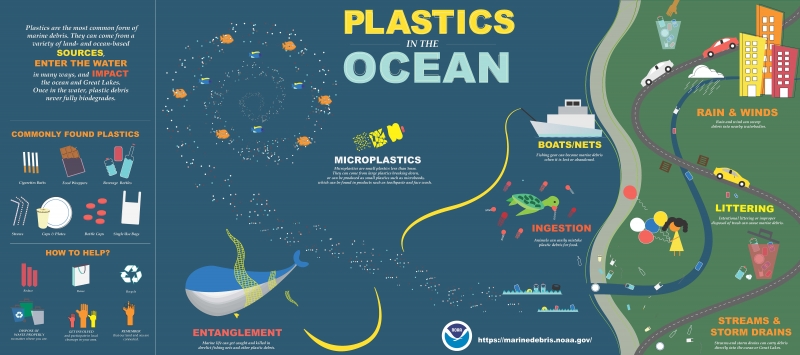Plastics in the Ocean: How They Get There, Their Impacts, and Our Solutions
Posted
Last Updated
By blog.marinedebris.noaa.gov.
Globally, we are consuming more and more single-use plastic items, but many countries lack the waste infrastructure to process it, resulting in plastic debris entering our waterways. In places where there is good infrastructure, intentional littering or improper disposal may have the same results. Many people don’t think about the way they may be contributing to this waste, such as by throwing a cigarette butt (which is plastic!) on the ground or adding their trash to the top of an overflowing garbage can. Plastics may also be introduced to the marine environment from ocean-based sources such as fishing gear that is lost or abandoned, or from trash washing over the side of a vessel.
So how does plastic trash go from sitting on a sidewalk to becoming marine debris? There are many ways that plastics may be moved throughout the environment. Weather such as rain and wind can move debris into nearby waterbodies. That overflowing trash can? Well, it’s not overflowing anymore since the wind swept those extra pieces away. Once debris enters a nearby stream or storm drain, it’s often not a long trip before it has arrived at the ocean or a Great Lake.
Unfortunately, once plastic debris is in the marine environment, it’s there to stay. Plastic never fully degrades, but instead breaks into smaller and smaller pieces, eventually becoming what we call “microplastics.” Microplastics are small plastic pieces, less than 5 millimeters in size.
read more at blog.marinedebris.noaa.gov.

